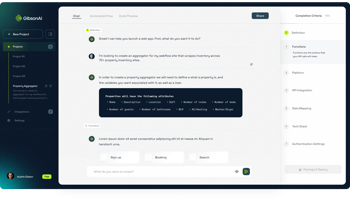Erase your tech debt overnight
Technical debt—it's a phrase that makes most developers wince, yet it's a reality in almost every software project. Over time, codebases grow increasingly complex as features are added, patches are applied, and deadlines loom. This accumulation of shortcuts, legacy code, and makeshift solutions becomes technical debt, slowing down progress and hampering scalability. Teams often find themselves trapped in a cycle of firefighting instead of innovating, with an ever-increasing backlog of tasks to "fix" things that are working—just not well.
Code refactoring is the antidote to technical debt. It involves restructuring existing code without changing its external behavior. The goal? Improve readability, reduce complexity, and make the codebase easier to maintain and extend. However, refactoring is time-consuming and resource-intensive, often competing with feature development for priority. This is where businesses face a dilemma: allocate valuable engineering hours to refactoring, or push forward with feature development and risk the consequences of mounting technical debt.
Refactoring in the Real World
Imagine a backend order management system for a wholesale food distributor. This system has grown organically over several years, each linked to various business processes and user interfaces. It's a classic scenario of technical debt accumulation—multiple teams have worked on it, each leaving behind layers of intertwined logic and inconsistent coding patterns.
To refactor this codebase traditionally, you'd need a team of developers combing through entity relationships, defining schemas, updating models, creating new APIs, and writing extensive tests. The process could easily take several months, especially given the challenge of ensuring that new code aligns with current business logic while eliminating inefficiencies. That's precious time spent not on innovation, but just trying to make what's already there more sustainable.
How GibsonAI Makes Refactoring Seamless
Enter GibsonAI—a powerful tool that transforms the refactoring process, tackling technical debt head-on. Let's revisit that backend order management system. Using GibsonAI, you can refactor the entire backend in a fraction of the time it would traditionally take.
Here's how:
GibsonAI can be used right from the command line to import all the entities from the backend system into your local development environment. It reads and understands the data model and generates well-structured code that adheres to best practices. Within moments, GibsonAI produces the necessary artifacts: base models, schemas, unit tests, APIs, and even documentation.
In under a minute, GibsonAI can generate over fifteen thousand lines of clean, well-organized code. It doesn't stop at code generation—it also writes out deployment files, enabling you to quickly package everything into a Docker container and deploy it to the cloud. Need to upgrade your codebase to the latest framework version? Want to convert your database tables into full-fledged REST APIs? GibsonAI handles it all, freeing your developers from tedious refactoring tasks so they can focus on creating value.
Accelerating Developer Productivity
With GibsonAI, developers can launch micro services faster, upgrade legacy systems, or completely refactor existing codebases with confidence. What previously took a team of developers several months can now be completed in hours. GibsonAI not only eliminates technical debt faster, but it also sets up your codebase for future growth and scalability—without sacrificing quality.
No more compromises between feature development and refactoring. With GibsonAI, you can have both: a robust, scalable codebase and the agility to innovate. Tackle technical debt before it becomes a major bottleneck, and let your developers do what they do best—build amazing products.


